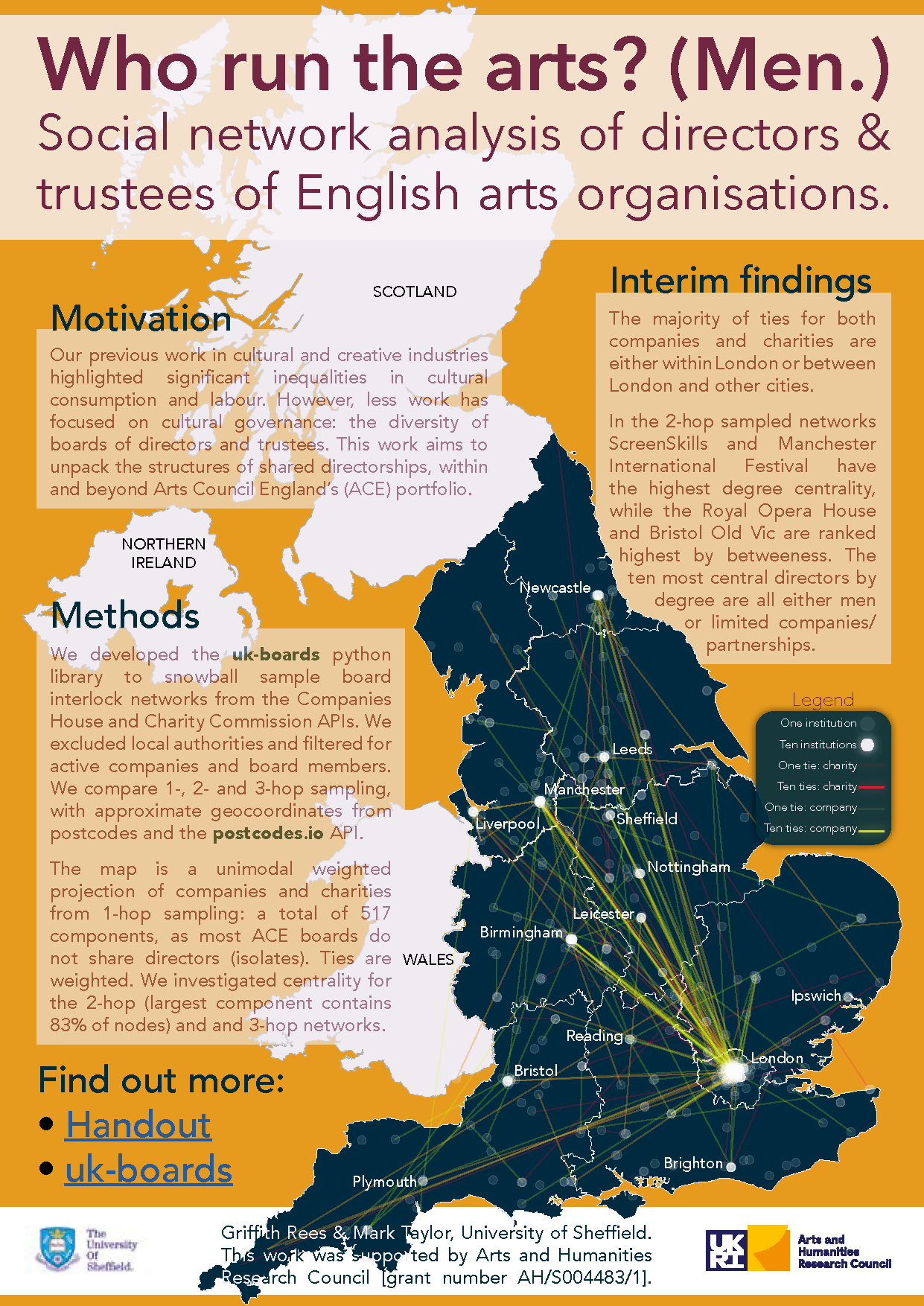
Who runs the arts? (Men.) Social network analysis of directors & trustees of English arts organisations
Griffith S Rees, Mark Taylor
Much recent work on inequality in the arts has focussed on consumption (who consumes art?), production (who makes art?) and representation (what art gets made?). As a result, governance has received less academic scrutiny, particularly with reference to the power and influence of board members. Board members who span across institutions are particularly important, as they may then collaborate, impact each other's programming and, however intentionally or otherwise, entrench inequality in the production and distribution of the arts, despite concerted efforts by public services to expand audience and workforce diversity.
With data available from the UK Companies House and the Charity Commission APIs, we extract board interlock networks seeded by the 831 Arts Council England National Portfolio Organisations. Almost all are registered as charities, companies, or both, with a few exceptions, mostly local authorities and higher education institutions. We snowball sample from these institutions to construct bipartite networks using different sampling parameters (k-hops and whether currently active) and project these to unimodal networks (board members, companies and charities) to assess how much this reflects Arts Council England's stated goals. Preliminary results suggest that board membership is highly unequal. We further explore metrics of power including degree and centrality of (i) organisations and (ii) board members to assess how the current structure relates to sociological accounts of inequality in arts consumption, production and representation. 
← Schedule

